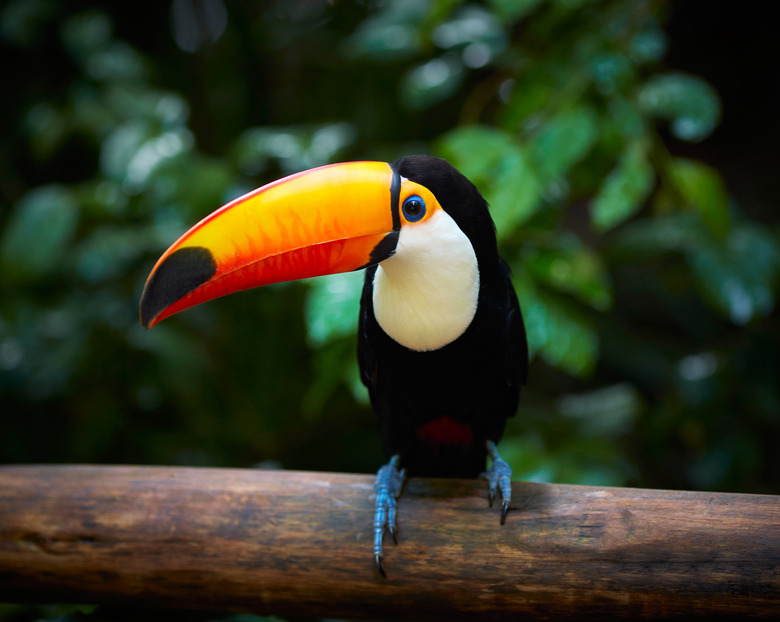Animals In The Rain Forest That Compete For The Same Food
Rainforests are known for their incredible biodiversity. They provide rich, vibrant homes for millions of plant, animal and insect species to coexist. A rainforest's resources aren't infinite, and sometimes animals are forced to go after the same prey to survive. Many rainforest dwellers have developed characteristics that give them advantages over their competitors. Some must fight with other animals to get the chance to nab their prey.
TL;DR (Too Long; Didn't Read)
Rainforest competition exists on every level, from the big cats and anacondas that prey on small mammals to the birds and amphibians that go after the same fruit, nuts and insects.
Rainforest Competition
Rainforest Competition
In the rainforest, many of the big cats such as tigers, jaguars and leopards all compete for food that includes small mammals, rodents, wart hogs, antelopes and monkeys. In an attempt to wipe out their top competitors, they sometimes go after each other, but those kills take more energy and come with more risk. They have better luck trying to be faster and stronger than their competitors while snagging the smaller prey.
Unfortunately for the big cats, anacondas also chase small mammals. Unlike other snakes, the anaconda's bite is not venomous. Instead of poisoning its prey, it uses its jaws to snag the unlucky animal and then wraps its strong body around it to strangle it to death. In this way, the anaconda can steal large prey such as crocodiles that big cats have a tough time killing. They are sometimes even able to snare jaguars, making the anaconda one of the competitors for the top of the rainforest food chain.
Nocturnal Roamers
Nocturnal Roamers
Some animals have adapted to competition by coming out at night. Certain types of bats and frogs want to eat the same fruit and insects that birds love, but if they come out to eat during the day, they risk becoming prey for those birds and larger predators such as leopards. Instead, they come out at night and eat the fresh bugs and nourishment that the birds didn't finish during the day.
Evolutionary Advantages
Evolutionary Advantages
Other rainforest animals have developed advantages to give them an edge over animals that compete for the same resources. For example, the Amazon is home to more than 1,500 bird species, many of which go after the same nuts, insects and fruit. Some types of birds, such as toucans and parrots, have developed strong beaks that act as nutcrackers. This allows them to crack nuts with hard shells that their bird competitors with smaller, weaker beaks aren't able to access.
Another example is the jaguarundi, a small wild cat. In the rainforest, it has to compete with bigger cats such as pumas and ocelots for rodents and other small mammals, so jaguarundis have adapted to their areas. Ones that live in denser, darker areas like rainforests produce darker pelts than their counterparts that live in desertlike areas. In this way, they blend in better than some of their competitors and snag prey without getting eaten themselves.
Cite This Article
MLA
Dragani, Rachelle. "Animals In The Rain Forest That Compete For The Same Food" sciencing.com, https://www.sciencing.com/animals-forest-compete-same-food-8149484/. 7 May 2018.
APA
Dragani, Rachelle. (2018, May 7). Animals In The Rain Forest That Compete For The Same Food. sciencing.com. Retrieved from https://www.sciencing.com/animals-forest-compete-same-food-8149484/
Chicago
Dragani, Rachelle. Animals In The Rain Forest That Compete For The Same Food last modified March 24, 2022. https://www.sciencing.com/animals-forest-compete-same-food-8149484/
